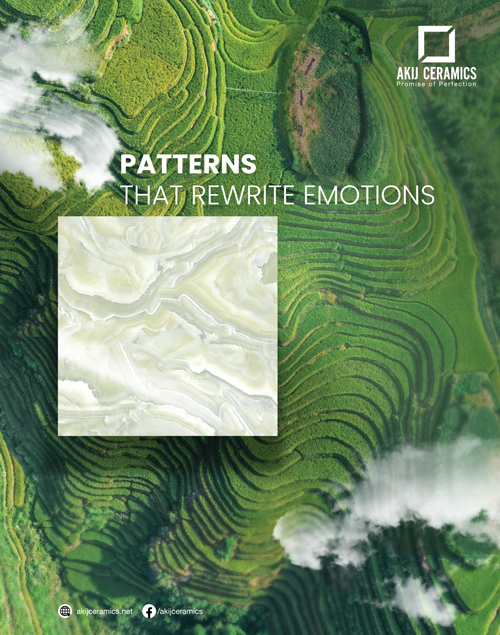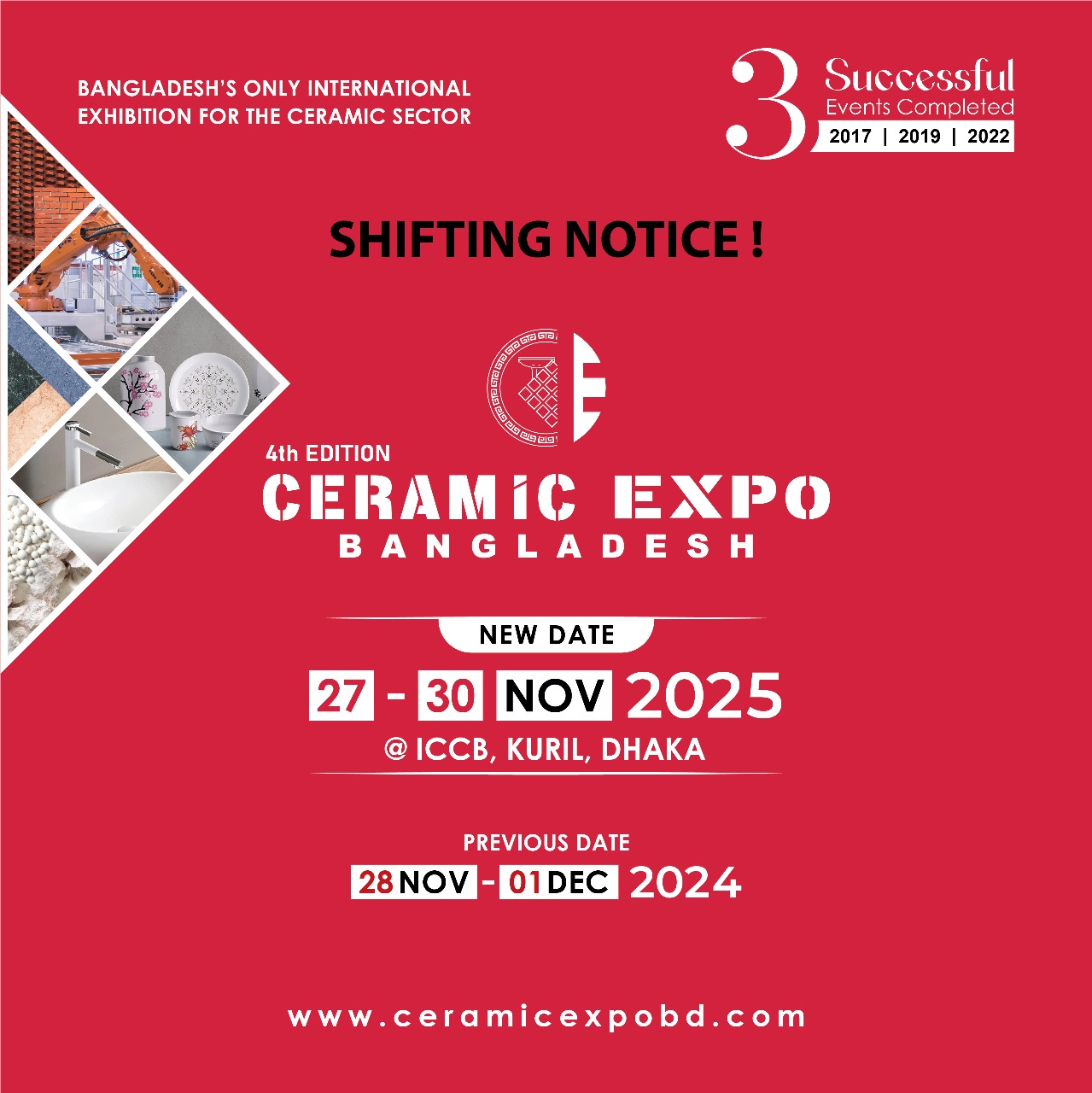Author: admin
DEMO POST FOR 5th Issue
Best Solution for Website Lorem Ipsum Lorem Ipsum is simply dummy text of the printing and typesetting industry. Lorem Ipsum has been the industry’s standard dummy text ever since the 1500s, when an unknown printer took a galley of type and scrambled it to make a type specimen book. It has survived not only five centuries, but also the leap into electronic typesetting, remaining essentially unchanged. It was popularised in the 1960s with the release of Letraset sheets containing Lorem Ipsum passages, and more recently with desktop publishing software like Aldus PageMaker including versions of Lorem Ipsum. Why do we use it? It is a long established fact that a reader will be distracted by the readable content of a page when looking at its layout. The point of using Lorem Ipsum is that it has a more-or-less normal distribution of letters, as opposed to using ‘Content here, content here’, making it look like readable English. Many desktop publishing packages and web page editors now use Lorem Ipsum as their default model text, and a search for ‘lorem ipsum’ will uncover many web sites still in their infancy. Various versions have evolved over the years, sometimes by accident, sometimes on purpose (injected humour and the like). Where does it come from? Contrary to popular belief, Lorem Ipsum is not simply random text. It has roots in a piece of classical Latin literature from 45 BC, making it over 2000 years old. Richard McClintock, a Latin professor at Hampden-Sydney College in Virginia, looked up one of the more obscure Latin words, consectetur, from a Lorem Ipsum passage, and going through the cites of the word in classical literature, discovered the undoubtable source. Lorem Ipsum comes from sections 1.10.32 and 1.10.33 of “de Finibus Bonorum et Malorum” (The Extremes of Good and Evil) by Cicero, written in 45 BC. This book is a treatise on the theory of ethics, very popular during the Renaissance. The first line of Lorem Ipsum, “Lorem ipsum dolor sit amet..”, comes from a line in section 1.10.32. The standard chunk of Lorem Ipsum used since the 1500s is reproduced below for those interested. Sections 1.10.32 and 1.10.33 from “de Finibus Bonorum et Malorum” by Cicero are also reproduced in their exact original form, accompanied by English versions from the 1914 translation by H. Rackham. Where can I get some? There are many variations of passages of Lorem Ipsum available, but the majority have suffered alteration in some form, by injected humour, or randomised words which don’t look even slightly believable. If you are going to use a passage of Lorem Ipsum, you need to be sure there isn’t anything embarrassing hidden in the middle of text. All the Lorem Ipsum generators on the Internet tend to repeat predefined chunks as necessary, making this the first true generator on the Internet. It uses a dictionary of over 200 Latin words, combined with a handful of model sentence structures, to generate Lorem Ipsum which looks reasonable. The generated Lorem Ipsum is therefore always free from repetition, injected humour, or non-characteristic words etc.
Read More4TH ISSUE
What is Lorem Ipsum? Lorem Ipsum is simply dummy text of the printing and typesetting industry. Lorem Ipsum has been the industry’s standard dummy text ever since the 1500s, when an unknown printer took a galley of type and scrambled it to make a type specimen book. It has survived not only five centuries, but also the leap into electronic typesetting, remaining essentially unchanged. It was popularised in the 1960s with the release of Letraset sheets containing Lorem Ipsum passages, and more recently with desktop publishing software like Aldus PageMaker including versions of Lorem Ipsum. Why do we use it? It is a long established fact that a reader will be distracted by the readable content of a page when looking at its layout. The point of using Lorem Ipsum is that it has a more-or-less normal distribution of letters, as opposed to using ‘Content here, content here’, making it look like readable English. Many desktop publishing packages and web page editors now use Lorem Ipsum as their default model text, and a search for ‘lorem ipsum’ will uncover many web sites still in their infancy. Various versions have evolved over the years, sometimes by accident, sometimes on purpose (injected humour and the like). Where does it come from? Contrary to popular belief, Lorem Ipsum is not simply random text. It has roots in a piece of classical Latin literature from 45 BC, making it over 2000 years old. Richard McClintock, a Latin professor at Hampden-Sydney College in Virginia, looked up one of the more obscure Latin words, consectetur, from a Lorem Ipsum passage, and going through the cites of the word in classical literature, discovered the undoubtable source. Lorem Ipsum comes from sections 1.10.32 and 1.10.33 of “de Finibus Bonorum et Malorum” (The Extremes of Good and Evil) by Cicero, written in 45 BC. This book is a treatise on the theory of ethics, very popular during the Renaissance. The first line of Lorem Ipsum, “Lorem ipsum dolor sit amet..”, comes from a line in section 1.10.32. The standard chunk of Lorem Ipsum used since the 1500s is reproduced below for those interested. Sections 1.10.32 and 1.10.33 from “de Finibus Bonorum et Malorum” by Cicero are also reproduced in their exact original form, accompanied by English versions from the 1914 translation by H. Rackham. Where can I get some? There are many variations of passages of Lorem Ipsum available, but the majority have suffered alteration in some form, by injected humor, or randomised words which don’t look even slightly believable. If you are going to use a passage of Lorem Ipsum, you need to be sure there isn’t anything embarrassing hidden in the middle of text. All the Lorem Ipsum generators on the Internet tend to repeat predefined chunks as necessary, making this the first true generator on the Internet. It uses a dictionary of over 200 Latin words, combined with a handful of model sentence structures, to generate Lorem Ipsum which looks reasonable. The generated Lorem Ipsum is therefore always free from repetition, injected humour, or non-characteristic words etc.
Read More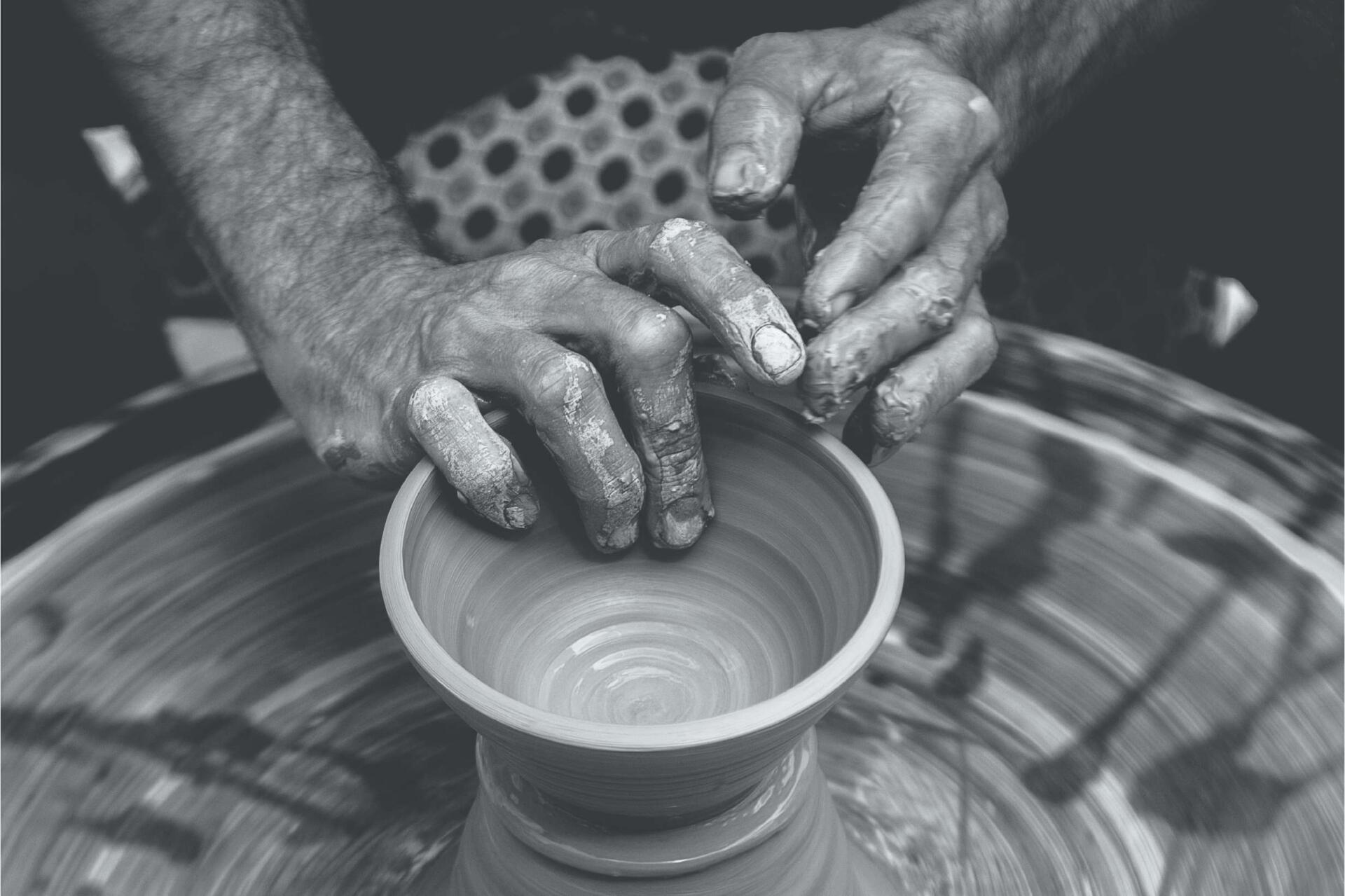
The Journey of Ceramics in Bangladesh
The origin of pottery in Bangladesh dates back to the later or post Mohenjo-daro and Harappa civilization and to the Indo-Aryan Vedic age, according to the research on ceramic earthenware and artifacts found after excavation of the ruins in Mahasthangarh of Bogura and Wari-Bateshwar in Narsingdi. Discoveries in Wari-Bateshwar included two millennium old potteries and terracotta. The potters then used traditional methods to make water vessels and sculptures for worshipping and as household utensils and showpieces. In the medieval age, the potters were popularised by the Hindu and Buddhist rulers and zamindars when they used to make statues of gods and goddesses, Buddha, plates, other aesthetical items and terracotta plaques in the temples and monasteries. The potters made everyday household items for sale in the local markets to earn a living. In the past century, the white clay deposits were first found in Mymensingh, Sylhet and Netrokona, the largest of which was discovered at Bijoypur of Mymensingh in 1957. Since the discovery of the white clay reserves in Bangladesh, the ceramic industry has come a long way. ‘Ceramic’ comes from the Greek word meaning ‘Pottery’. The journey of ceramics started through pottery and was initially only a mixture of inorganic, non-metallic clay which could be heated at very high temperature to make it hold its shape. Since then, mankind has found multifarious uses for this clay and the quality of the clay has been improved. Ceramic in this era has much hardness and strength, is heat resistant, is a good insulator, unreactive to other chemicals and long-lasting and hard-wearing. Among its many uses, the ceramics industry started in Bangladesh with just the manufacture of tableware and now covers four broad subsectors: Tableware, Tiles, Sanitary ware and Ceramic Bricks. A brief review of the journey of ceramics in Bangladesh is portrayed below. In 1959 the industry took its nascent steps with only one small tableware manufacturing plant in Bogura, Tajma Ceramic Industries Ltd. Tajma Ceramics is the first ceramic earthenware plant to produce porcelain tableware using traditional methods. In 1962, Mirpur Ceramic Works Ltd in Dhaka started to produce heavy clay products using German plant and technology and developed a reputation of manufacturing best quality ceramic bricks in the subcontinent. In 1966, Peoples Ceramic Industries Ltd, formerly known as Pakistan Ceramic Industries, located in Tongi, Gazipur, started production using modern porcelain tableware manufacturing technology procured from Japan. They started exporting their products. In 1974, the country’s first non-heavy clay building ceramic plant came on the stream, Dacca Ceramic & Sanitary-wares Ltd. The company was the first to start production of sanitary ware at Tngi, Gazipur. In 1985, Monno Ceramic Industries Ltd transformed and revolutionised the exports of local ceramic products by branding Bangladesh ceramic products on an international level, using West European and Japanese plants and machinery. Monno Ceramic is the first industry to use ultra-modern technologies to produce porcelain tableware aimed at exporting worldwide. Later it added its bone china tableware unit also aimed at improving the exports of ceramic tableware from Bangladesh. In 1986, Bangladesh Insulator & Sanitary ware Factory Ltd. (BISF) started manufacture of ceramic tiles at Mirpur, Dhaka, with Czech machinery and technology. In the same year, Bengal Fine Ceramics Ltd, the first stoneware tableware manufacturer in Bangladesh, located in Dhaka, entered the domestic and international markets. In 1992, with the exponentially growing ceramic industry, a nationally recognised trade organisation of manufacturers and exporters of ceramic tableware, pottery, tiles, sanitary ware, insulator and other ceramic products was formed, called Bangladesh Ceramic Manufacturers & Exporters Association (BCMEA). In 1993, Madhumati Tiles Ltd. became the country’s first tile manufacturer to use modern German and Italian technologies to produce the latest standard ceramic tiles that domestic consumers see and use at present. In 1999, Shinepukur Ceramics Ltd. started production of porcelain and bone china tableware with Japanese, German and French machinery and technology. It earned a reputation for being one of the major exporters in Asia. Ceramic Industry Scenario (FY 2021-22) An industrial revolution has resulted in a burgeoning Ceramic Industry since the start of its journey with just one small tableware manufacturing plant. Today, there are more than 70 ceramic manufacturers in operation in the country with core products being tiles, tableware, sanitary ware and bricks. As the country experiences steady economic growth and urbanisation, the local demand for ceramic products too continues to grow. These ceramic bricks, tiles and sanitary ware have been used in several mega projects by the government to ensure overall infrastructural development. The growth trend is an indication of the industry’s potential to be one of the top foreign exchange earners. And the tableware made in Bangladesh, both Bone China and Porcelain, is famous around the world for its eminent quality and design. Here is a snapshot of Bangladesh’s ceramic industry: Quality Raw Materials: The exponential growth in the ceramic sector is owing to the high-quality ceramic products manufactured in Bangladesh. The ceramic sector has the availability of uninterrupted Sulphur-free natural gas and the latest cutting-edge technologies imported from Germany, which make our products shinier and more durable. The glaze and pigments are lead and cadmium-free and 100 per cent halal ingredients are used in the production process. The other factor in favour of the industry flourishing is the relatively low labour cost yet availability of skilled manpower. The direct manpower involvement in the industry is about 52,000 whilst the indirect involvement is over half a million. The industry is considerably compassionate towards the women and people with disability. The industry works to train women and physically challenged workers for inclusivity. Around 20 per cent of the workforce is highly-skilled women. Today owing to these favourable conditions, the industry is distinguished around the world. Investment: The total investment, both local and international, in the industry is about US$ 1.70 billion. The investment share of tiles is 62 per cent, tableware 23 per cent and sanitary ware 15 per cent. The sector has lured foreign investment mainly from China and the Middle East. These
Read More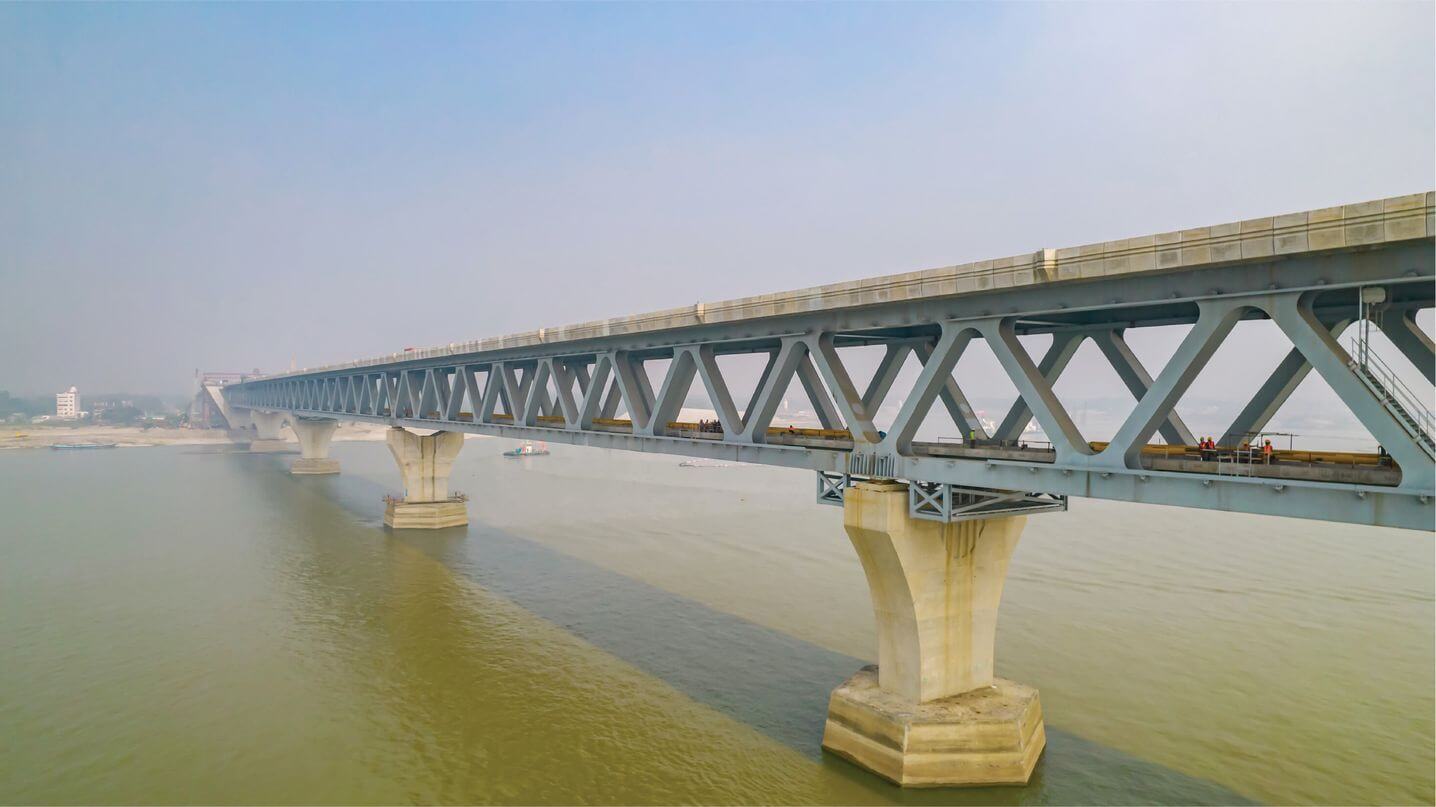
A Bridge to Prosperity – From Transport Connectivity to Economic Corridor
The opening of the Padma Bridge has created the scope for a new wave of investment in the country’s south and south-western region. The region’s easier road communications with the rest planned and tourism sector entrepreneurs are hoping for a business boom surrounding Kuakata sea beach and the Sundarbans. Thus, the bridge has offered a new economic corridor in the making. Economists and business leaders believe with remarkable improvement in road network though the bridge trade and business in the region would expand rapidly, raising the people’s income, creating jobs and eradicating poverty. The Padma Bridge is also expected to bring about a massive change in the entire economy. The Ministry of Road Transport and Bridges believes the economic corridor surrounding the Padma Bridge and its adjacent areas would increase the country’s GDP (gross domestic product) growth by 1.27 percentage point. The southern region’s economy will grow at a higher pace. Predicting a higher GDP growth for the Padma Bridge, the Asian Development Bank (ADB) said the rate of poverty reduction will be accelerated by 0.84 per cent every year. However, as many as 53 upazilas out of 133 upazilas in 21 districts on the south-western side of the bridge are of high concentration of poverty, according to Bangladesh Bureau of Statistics (BBS) poverty map. Another 42 upazilas are in the medium poverty risk category and 38 in low poverty risk category. Economist and chairman of Palli Karma-Sahayak Foundation (PKSF) Quazi Kholiquzzaman Ahmad said small entrepreneurs are more enthusiastic about the Padma Bridge and they should be provided with opportunity to make investment and various supports such as gas and electricity supply should be ensured at affordable costs. He observed that the bridge has jointed the southern belt with the rest of the country. The bridge will result in smooth transportation of farm produces from the region, according to Implementation, Monitoring and Evaluation Division (IMED) of the Ministry of Planning. It said farmers’ income will increase 15-20 per cent since direct connections between farmers and the market forces will be established. Transport sector insiders added the time for transportation of goods from Benapole to Dhaka would come down to 6-7 hours from 24-36 hours. The southern region was attractive for low-cost transport of goods by river routes but longer time and uncertainity in ferry services earlier discouraged the entrepreneurs from taking business initiatives. The Padma Bridge has now created the scope for big companies to come forward with investment projects in the region. The companies that have shown interest in setting up factories in the region include Sheltech, Pran-RFL, TK Group, Envoy Group, Hameem Group, Mir Group, Karim Group and Opsonin Pharma. Bangladesh Economic Zones Authority (BEZA) has unveiled a master plan on Padma Bridge that would directly benefit Dhaka, Khulna and Barisal divisions. It is taking steps to establish 17 new Economic Zones (EZ) in 21 districts of the three divisions. In the 1960s, Khulna became one of the few industrial hubs of the country but it has subsequently lost the glory. However, after the launch of Padma Bridge, Khulna is drawing attention of the investors. Abdus Salam Murshedi MP, president of Bangladesh Exporters’ Association (BEA) and former president of BGMEA said, “I definitely want to use this opportunity. I want to set up a new garment factory in Khulna. I also encourage others to invest in the region.” In fact in 2019, Sheltech Group established the country’s largest ceramics industry in the southern district of Bhola. The company invested more than Tk 7 billion taking advantage of local natural gas and cheap land with the hope of opening of the Padma Bridge in 2022. Now, Sheltech is also planning to set up a non-denim garment factory in Bhola, said Engineer Kutubuddin Ahmed, chairman of the group. “We are now looking for land to set up a ready-made garment industry in Barisal. After the inauguration of the Padma Bridge, investing in the south is the most promising one,” he added. Chini Tikri the inaugural murals the inaugural murals One of the two spectacular installations at each end of the Padma Bridge is its inaugural mural – which has been constructed by using 15,000 ceramic plates. The portraits of Father of the Nation tbreaking these 37 coloured plates into ‘Chini Tikri’. One was the dreamer of Padma Bridge and the another one is its implementer. As the ceramic plate is broken and made, it starts to sparkle when the sun shines on it. These ceramic plates are hammered and broken into about half a million pieces. Then different colours of the pieces are arranged one after one to create two beautiful portraits. Designed by architect Fazle Karim Shishir of Drishik, the two murals were created by artists Ashraful Alam Riaz and Didar Ul Alam. Both are graduated from the Fine Arts Institute of Dhaka University. The 90-feet-long and 45-feet-high mural at the Mawa end was done by Didar Ul Alam and the 72-feet-long and 36-feet-high mural at the Janzeera end was done by Ashraful Alam Riaz. They told Ceramic Bangladesh that at first the designer thought of making this mural with ceramic tiles, but later they chose ceramic plates of the highest quality considering the bright colour and durability. A total of 15,000 plates of 37 types of colours have been used here. Among them, 7 types of coloured plates are used to display black and white portrait of Bangabandhu. And 30 types of coloured plates are used to produce colourful portrait of Prime Minister Sheikh Hasina. All of these ceramic plates are customised. Because such a variety of colour plates are not usually produced by ceramic companies. Artisan Ceramics made 8,000 plates used in the Mawa end mural and Monno Ceramics made 7,000 plates used in the Janzeera end mural. This construction work was completed in two months by two separate teams of 50 people, working 24 hours a day, after last Eid-ul-Fitr. No bigger mural has been made in Bangladesh so far. Artist Ashraful Alam Riaz, Managing
Read More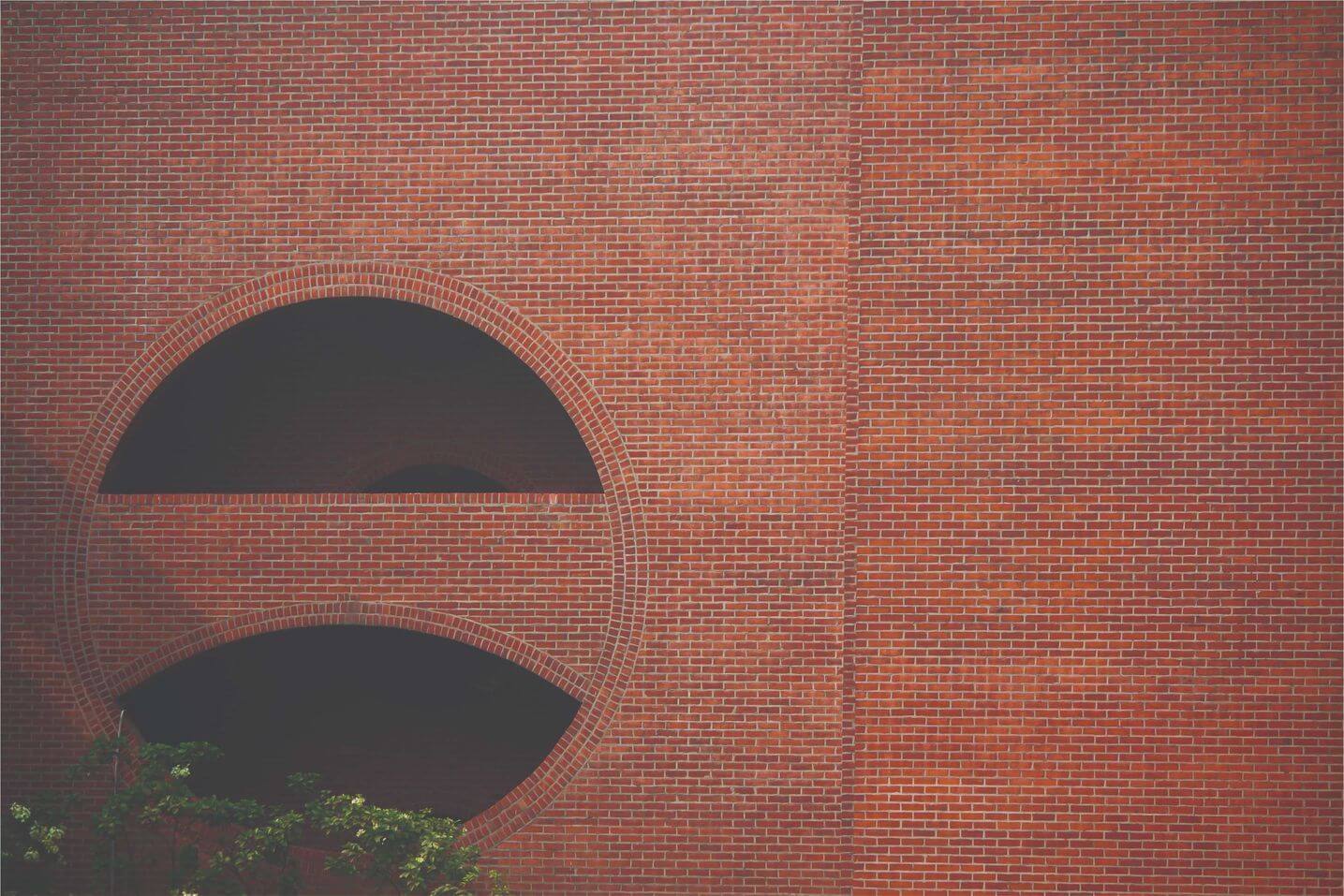
Untold Story of The Father of Ceramic Bangladesh
Have you ever noticed a similarity between government buildings? Have you ever wondered why most of them have a reddish surface? Why are all national monuments founded on red architectural bases? How are hundreds of government structures standing tall prioritising only red ceramic bricks? Schools, colleges, universities, hospitals, airports, government offices, quarters, and parks such structures and the list goes on and on. Everything, every single structure is designed with ceramic red bricks. Is this any official rule? Or, is it a legacy since the British period? Or have the architects decided to create a similar pattern? We all have many interesting stories to tell but these red ceramic bricks have much more to say. This one is an unpublished story about the red ceramic bricks. It unfolds how a visionary thinking and support of a great man has changed the shape and outlook of architecture in Bangladesh. Communal Violence Let’s go back to 1946. The violent legacy of the British India’s partition spread across the subcontinent. It was a grave attack on all of humanity. People were uprooted from their ancestral homes in the name of religion. Communities that had coexisted for almost a millennium attacked each other in a terrified outbreak of sectarian violence –a mutual genocide that was never expected. The carnage was especially intense with massacres, arson, forced conversions, mass abductions and savage sexual violence. Mass Migration Immediately after the partition began one of the largest migration of modern human history, as millions of Muslims trekked to West and East Pakistan while thousands of Hindus and Sikhs headed in the opposite direction. The summer of 1947 witnessed a mass migration. According to the book “The Great Divide” by William Dalrymple, around 15 million people had been uprooted, and between one to two million were dead. The people who could afford to, left in planes, ships or special trains. Most of them took regular trains and the poorest of the poor travelled on foot or cart. The summer of 1947 witnessed the biggest mass migration in human history. Around 15 million had been uprooted, and between one or two million were dead. AND THE TABANIS During that time in Gujarat, there lived an aristocrat rich Muslim family, “The Tabanis”. Like other traditional Gujaratis, the Tabanis were also involved in business and lived in a joint family. From their ancestral times, they were into textiles and yarn business. The two young brothers– Ariff Wali Mohammad Tabani and Rashid Wali Mohammad Tabani– used to look after their business and assets. They were well settled with dignity until the fear of communal violence had spread across their state. RASHID WALI MOHAMED TABANI RASHID WALI MOHAMED TABANI Compared to Panjab and Bengal, Gujarat’s experience of violence was not as much worse, even though the state had a long border with Muslim state of Pakistan. Over a million people migrated to Gujarat, mostly from neighbouring Sindh province of Pakistan. The Tabanis were unaffected during the unrest but the news of sufferings coming from the surrounding states forced them to rethink their future steps. The worried Muslim family decided a permanent migration to East Pakistan (currently Bangladesh) along with their prized possessions. Bangladesh was not unknown to the Tabanis. They frequently visited this part of the British Indian sub-continent for expansion of their textile business in their early days. During that period they had already developed a liking for this beautiful lush green land and its amicable and accommodative people. The brothers considered this Muslim majority land as the safest to live seeing an unbound opportunity to explore their textile legacy. Protecting Harmony During the communal riots, young Shiekh Mujibur Rahman was in Kolkata. According to his unfinished autobiography (Oshomapto Attojiboni), he was given the responsibility of guarding a Muslim-inhabited slum. Young Mujib stood firmly in front of the rioters to stop them. He along with his political comrades marched around the streets of Kolkata to protect the victims. People of both religions had been bloodied. The attitude of revenge and counter-revenge was on both sides. Mahalla after Mahalla (locality) had been burnt down. In the midst of all this, Mujib did not hesitate to come forward to help the victims, saving lives of both Hindus and Muslims even at the risk of his own life. Sheikh Mujib’s engagement in maintaining peace and communal harmony in Kolkata was noticeable and for that he was made the leader of hundreds of rescue workers and sent to Patna of Bihar to handle the riot situation on behalf of then Muslim League leader Hossain Shahid Suhrawardy. By the time he came back to Kolkata, he was literally sick as well as sickened by what he had experienced in the past few months. In addition, the political activities of Muslim league were difficult to continue during that time in Kolkata. So, Shiekh Mujib returned to East Bengal after taking permission from his political guru Suhrawardy. And then, there started the beginning of a new era. Dream of a capital city The failure to get Dhaka as the capital of Pakistan was painful for a young Bangabandhu. However, the provincial capital of East Pakistan, Dhaka, was declared as the second capital that’s of Pakistan. He had to wait 25 years to make Dhaka a complete capital of an independent country. Bangabandhu said that although Dhaka was the provincial capital, it had already been declared the second capital of Pakistan. Therefore, there were plans to build a lot of large infrastructures and buildings here soon, which were to be of world class and long lasting. Mujib did not hesitate to come forward to help the victims, saving lives of both Hindu and Muslim communities even at the risk of his own life A New Beginning The Tabani family migrated safely and settled in their new home in Old Dhaka. It was a new place, a new environment and a new opportunity to meet new people – ideal for a fresh start. The inherent spirit of adventure and the
Read More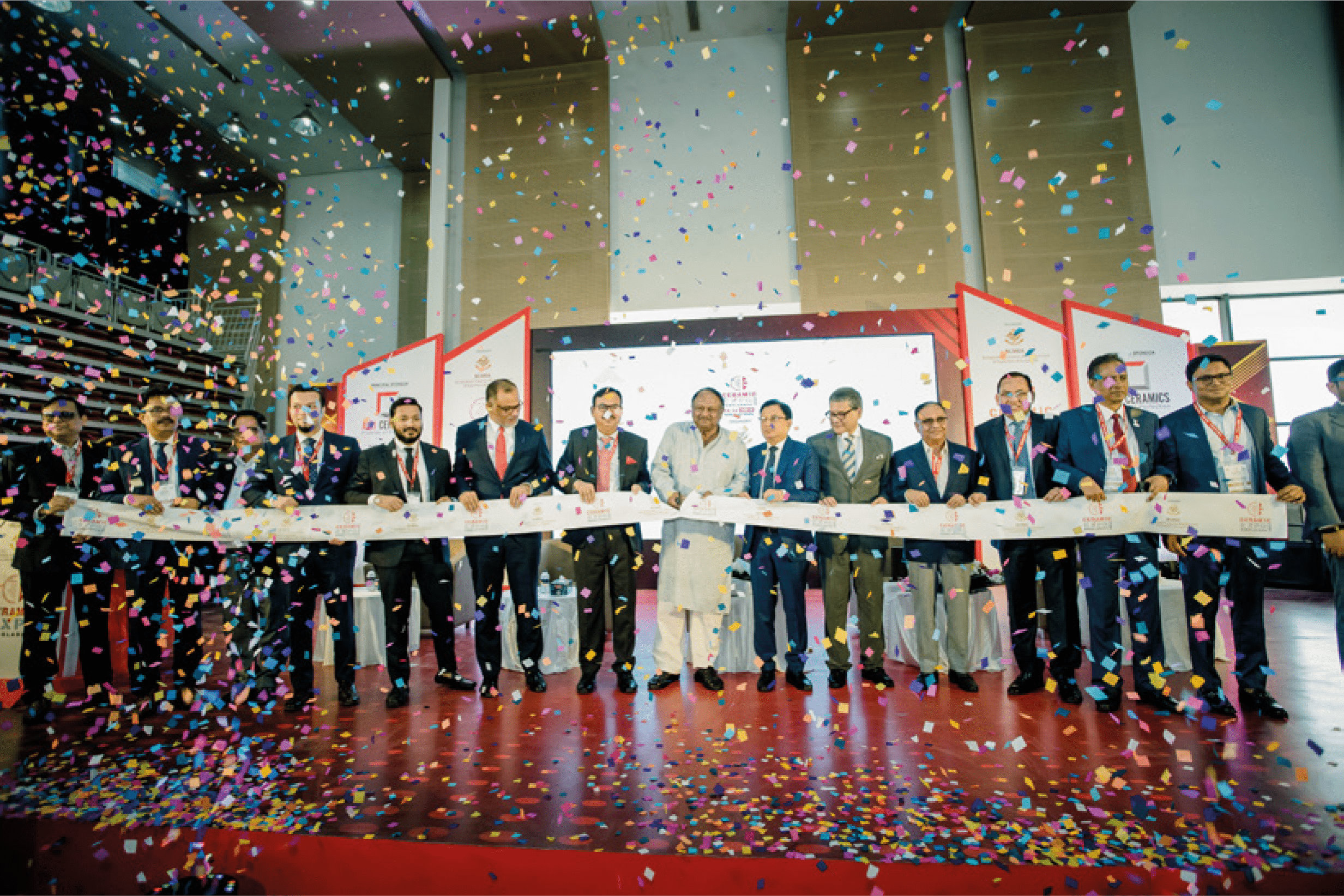
Ceramic Expo Bangladesh 2022
Bangladesh is the new booming market in the world of ceramics. The industry has shown remarkable growth potential with increasing demand and maximum supply level from all of the sub-sectors such as tableware, sanitaryware, and tiles. In order to encourage development and growth of such a promising sector, the 3rd edition of International Ceramic Expo Bangladesh 2022 was held at ICCB, Dhaka from November 24-26. The event is recognised as one of the most prestigious and exciting business expositions of the global ceramic market.
Read More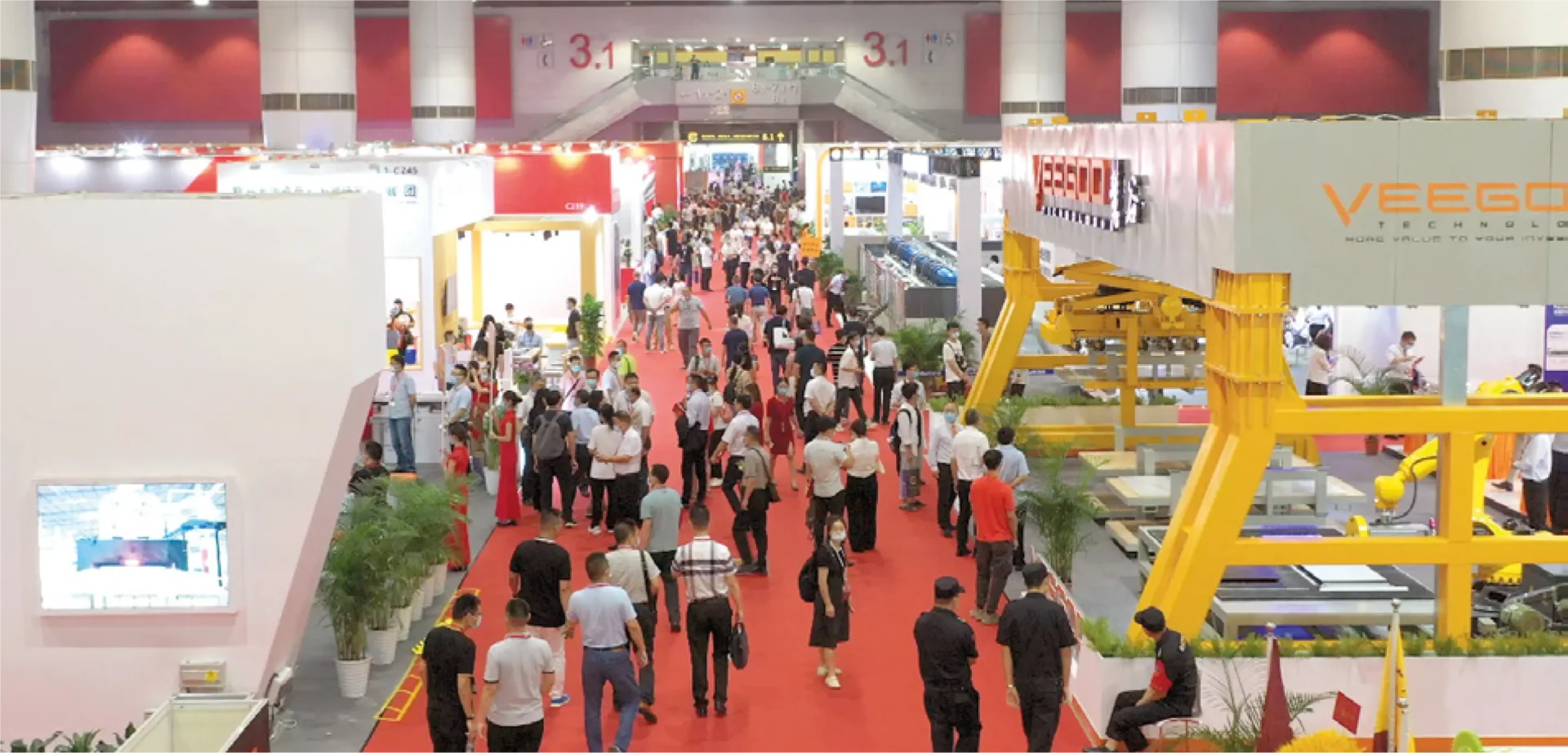
CERAMICS CHINA 2023 dated on June 19-22
From June 19 to 22, the 37th edition of China International Exhibition for Ceramics Technology, Equipment and Product (CERAMICS CHINA 2023), organized by Unifair Exhibition Service Ltd and sponsored by China Ceramic Industrial Association, will be held in Canton Fair Complex, Guangzhou. CERAMICS CHINA 2023 will gather more than 700 suppliers of equipment and materials from home and abroad, to display their high-quality products, leading technologies and solutions including raw materials, decorative materials, refractories, grinding materials, production and finishing equipment, spare parts, moulds, tools, design services, etc., to empower the high-quality development of the ceramics industry. Historical exhibitors of CERAMICS CHINA are from 30 countries and regions including China, Italy, Spain, Germany, UK, France, USA, Japan, Korea, Turkey, India, Iran, etc.
Read More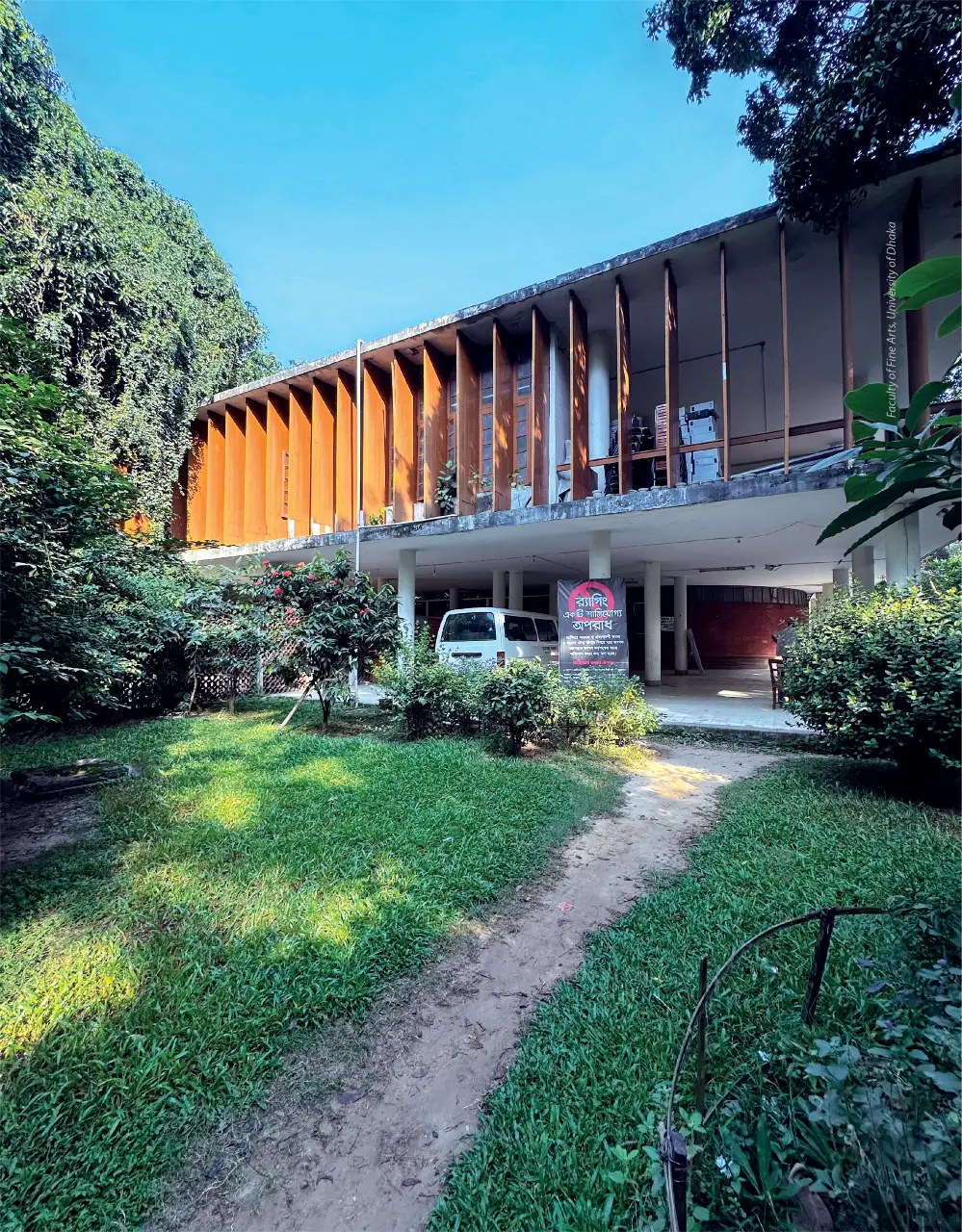
Architect Muzharul Islam
Beyond his role as an innovative architect, Muzharul Islam was characterised by humility and an unassuming nature. His consistent choice of traditional clothing and a preference for a modest lifestyle indicated a deep commitment to his craft rather than a pursuit of personal recognition. The simplicity and focus on perfection in his work underscored the profound impact of his architectural contributions, and the enduring prominence of his legacy in South Asian architecture speaks volumes about his unwavering dedication and passion. The roots of modernism in Bengal can be traced back to the Bengal Renaissance, a cultural and intellectual movement spanning the late 18th to early 20th centuries. This period witnessed a resurgence of liberal thoughts, intellectual exploration, and a reevaluation of traditional norms. The Bengal Renaissance played a pivotal role in reshaping ideas related to liberalism and modernity. During the British colonial rule, neo-classical and neo-gothic aesthetics significantly influenced East Bengal’s architecture, evident later on in East Pakistan in public structures symbolising power, the rule of law, and cultural dominance. Before the 1971 War of Independence, which resulted in the formation of Bangladesh, East Pakistan sought to establish itself as a liberal community. One significant architecture during this period was the Faculty of Fine Arts, which emerged as a modern marvel. This architectural endeavour intentionally steered clear of ornamental elements associated with Mughal or Indo-Saracenic styles. Muzharul Islam, the architect behind this significant structure, employed a conscious strategy in abstracting his design through a modernist visual expression. This deliberate approach aimed to rid the architecture of perceived political associations with instrumental religion. By steering clear of traditional and ornamental influences, he aimed to create a design that stood as a manifestation of secular ideals, distancing itself from the religiously charged politics that defined the era. In doing so, the Faculty of Fine Arts became more than just a physical structure; it became a visual and ideological statement, symbolising the pursuit of a secular and liberal identity for East Pakistan through its architecture. Indeed, Mr. Muzharul Islam’s influence extends far beyond his time, establishing him as the one of the most influential architects in the history of his country. His visionary contributions to architecture, coupled with his dedication to shaping the national identity through his work, have left an indelible mark. In 1964, at the pinnacle of his career, Muzharul Islam established the architectural consulting firm “Bastukolabid”. It marked a milestone, as it was the first architectural consulting firm in the East Pakistan. At that juncture, one who could have done his work solely for personal profit, he expressed the desire for collaboration with world-class architects. That period witnessed the notable involvement of the American trio — Louis Kahn, Paul Rudolph, and Stanley Tigerman — in architectural endeavours in Bangladesh. Muzharul Islam played a pivotal role in fostering this collaboration, recognising the need for visually and intellectually stimulating paradigms in the Bengali context. The partnership brought a global perspective to the architectural landscape and contributed to the enrichment of architectural discourse and innovation in this region. Muzharul Islam’s visionary dream was to elevate Bangladesh into a developed, alluring, and civilized nation through meticulous physical planning and control over every square foot of its territory. He aimed to craft a distinctive national identity that would set Bangladesh apart. Muzharul Islam, a fervent patriot who not only fought on the battlefield during the 1971 War of Independence but also contributed significantly to shaping the national identity through his endeavours in art and architecture, faced a disheartening period of neglect in the post-independent era. Following Bangladesh’s independence in 1971, Muzharul Islam found himself marginalised from government projects, a stark departure from his active role in the liberation movement. The reasons behind his sidelining were multifaceted, with a prominent factor being his steadfast commitment to Marxist and Leninist principles. This ideological stance placed him at odds with the establishments during that period. Despite his noteworthy contributions to the freedom of Bangladesh, Muzharul Islam experienced discord with the post-independence political landscape. This period of neglect serves as a poignant illustration of the complexities and challenges faced by individuals with unwavering ideologies in the aftermath of political transitions. In 1953, at the age of 30, Muzharul Islam designed the Institute of Arts and Crafts (Art College) building in Dhaka. It is recognised as the first modern building in Bangladesh. After completing the Fine Arts Building in 1956 and the National Library in 1958, it was being said that Muzharul Islam wanted to include other arts like music building, dance, and dramatics departments in addition to the architecture school besides the Fine Arts Building. Creating a total art complex would have expanded the scope of architectural education, breaking away from the traditional notion that architecture is solely rooted in science. If Muzharul Islam had succeeded in implementing his vision, it could have had a profound impact on architectural education in the country. The inclusion of diverse art forms within the same educational campus might have fostered creativity, collaboration, and a broader understanding of the cultural and aesthetic aspects of architecture. This holistic approach could have produced architects with a richer skill set, capable of not only designing structurally sound buildings but also creating spaces that resonate with cultural and artistic expression. Throughout the 1950s and 1960s, Muzharul Islam’s Six-B pencil and charcoal inspired designs like Falgudhara, building one modern architecture after another. Science Laboratory (BCSIR) building in Dhaka, NIPA Bhawan of Dhaka University, BADC Bhawan and Jiban Bima Bhawan in Motijheel, Rangamati Township, Chittagong University, Jahangirnagar University, the World Bank Dhaka Office, Mausoleum of National Poet Kazi Nazrul Islam etc. are modern architectures used as a tool to build a modern society. His most important work was born when the Governor’s Conference of Pakistan decided in 1959, under the President Ayub Khan, that Dhaka will be the second capital of Pakistan. The government decided to build a capital complex at Sher-e-Bangla Nagar, Dhaka. Muzharul Islam was given to design Jatiyo Sangsad Bhaban (National Assembly Building
Read More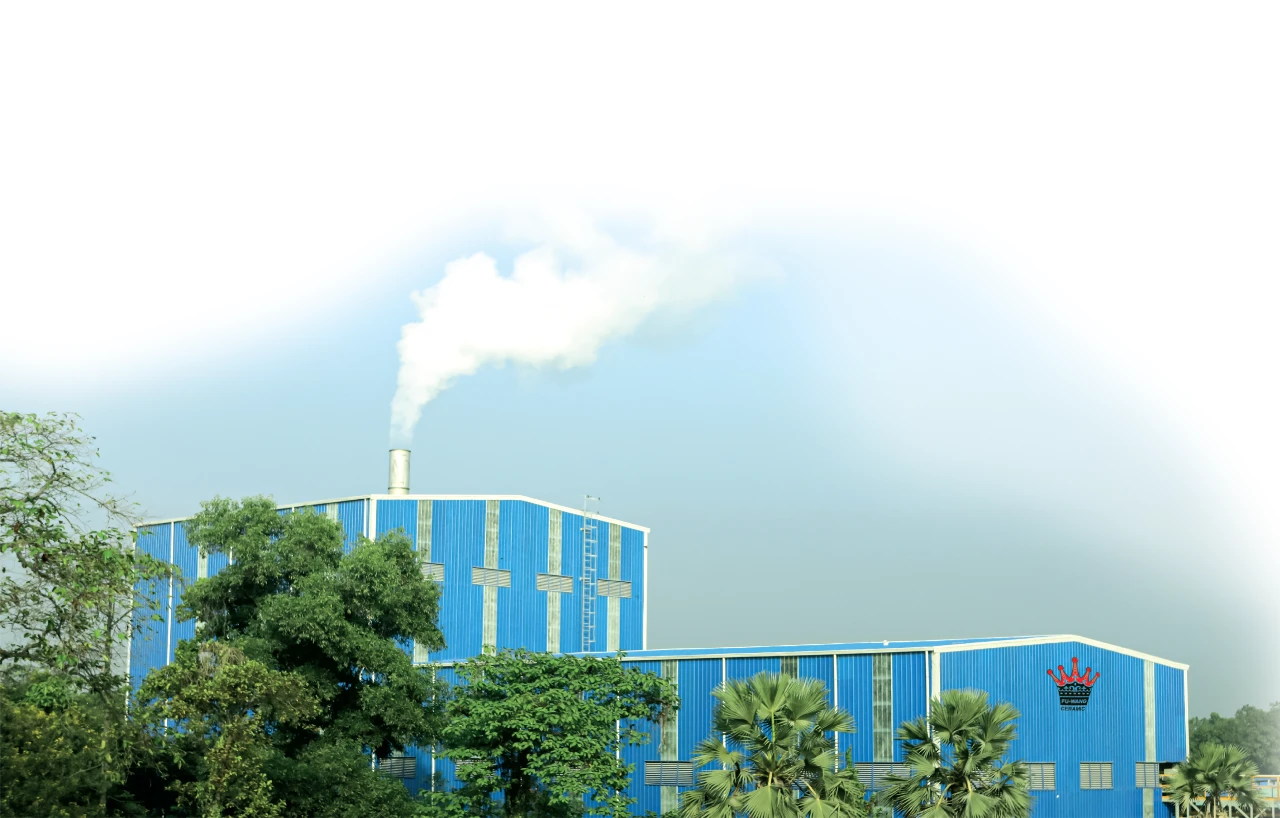
Fu-Wang Ceramic Industry A Journey of Resilience and Growth
FU-WANG Ceramic Industry Limited, founded in 1995 as a joint venture between Taiwan and Bangladesh, has evolved into a major player in the ceramic industry. Despite Taiwan investors’ departure in 2008, the company continued to thrive, reshaping the landscape of ceramic production in Bangladesh. During the 1990s, Bangladesh heavily relied on ceramic imports from countries such as China, Sri Lanka, Spain, and Italy. Fu-Wang entered the market and made a significant impact. Subsequently, other prominent players like RAK, CBC, and Mir Ceramic joined, solidifying their presence in the country’s tiles market. Presently, RAK, DBL, Fresh, Fu-Wang, and X Ceramic are the key players in Bangladesh’s tiles sector. With an aggregate investment of $1.8 billion in the ceramic sector, of which 66 per cent is allocated to the tiles, the domestic tile market is valued at $650 million. Fu-Wang Ceramic Industry went public in 1998, listing its shares on the Dhaka and Chattogram Stock Exchanges. Fu-Wang Ceramic has created a good number of employment opportunities. Its products are manufactured in the factory of Gazipur. The company has since maintained impressive annual growth, consistently achieving a 20 per cent increase. Product diversification and challenges faced Fu-Wang Ceramic Industry is known for producing two types of products: those tailored for the mass market including industries, universities, shopping malls etc. and luxurious tiles designed for apartments, hotels and offices. The company has also introduced high-quality brands like Picasso and Picasso Premium, offering larger wall sizes and various floor sizes tiles under the guidance of European and Asian technologists. The foundation of Picasso Premium 60x60cm PGVT tiles lies in state-of-the-art robotic technology. Each tile is crafted with unparalleled precision and accuracy, ensuring uniformity in size and shape. The company employs Nano Technology in the production of PGVT tiles, enhancing their durability and shine. This advanced technology creates a protective layer on the tile surface, making them resistant to scratches, stains, and wear. The timeless elegance of marble, the warmth of wood, or the modernity of concrete, Fu-Wang designs capture the essence of nature and elevate the interior design to new heights. Each of 60x60cm PGVT tiles is meticulously packed with a surface protective film. This film safeguards the tiles during transportation and installation. However, the industry currently is facing a range of challenges. These include difficulties in opening Letters of Credit (L/C), surging natural gas prices coupled with low gas pressure, and unreliable electricity supply to factories. Moreover, navigating the intricate landscape of government policies has posed additional obstacles for businesses in Bangladesh. Besides, current economic headwinds has contributed to decline in the sales of the ceramic products. To carry on the business, the government should withdraw Supplementary Duty (SD) on the local ceramic products and supply gas and electricity uninterruptedly to the factories. The CEO of Fu-Wang Ceramic Industry Limited (FWCIL), Mr. Rafiquzzaman Bhuiyan, shared his experiences with the Ceramic Bangladesh (CB) in an exclusive interview. Adapting to market dynamics Despite these challenges, Fu-Wang Ceramic Industry remains steadfast in its commitment to leading the tiles sector in Bangladesh. The CEO recognises that competition is intensifying, and only large companies will be able endure while smaller ones might face closure. Making profit is tough due to competition. Besides, the demand for high-value and luxurious products is increasing in local and international markets. So, small companies have to compete with large companies. However, considering current market demand, they have to change product designs in accordance with new technology. Now local companies are meeting 85 per cent domestic market demand. And the rest of 15 per cent is met by imported products. If they can reduce import dependency further, dollar reserve will increase. So, policy support is crucial. “Our plan for the future is to manufacture selective and valuable products to compete in the market. We will expand our production base. Mass production helps to reduce product costs. We will produce high-value products in the future increasing market demand,” said Mr. Rafiquzzaman Bhuiyan. To meet the evolving market demands, Fu-Wang plans to adapt its product designs using new technologies. Moreover, they aim to reduce their dependency on imported products to bolster their reserves. The company’s strategy for the future is to manufacture selective and high-value products to cater to the increasing demand in both local and international markets. Export challenges, domestic potential While the export market has presented challenges due to global competitiveness, the domestic market for tiles has experienced significant growth. Changes in people’s lifestyles and increased per capita income have contributed to the surge in demand. Fu-Wang is exploring the possibility of entering the tableware manufacturing sector and is focusing on branding and digital marketing to expand its market presence. A call for government support and FDI The domestic demand for tiles has increased vastly thanks to change in people’s lifestyles and booming construction sector. A good number of companies have also been established here. In Bangladesh, the number of tile companies may further go up as tiles are now used in rural areas too. So the market is expanding, and it will continue to expand. People are spending more money on their houses as a pre-emerging country. In this context, Fu-Wang management is planning to what type of new products can be brought in the market in future. Meanwhile, Bangladesh has made a reputation in the international market exporting high-valued tableware products. However, there is a huge potential for foreign direct investments (FDI) in Bangladesh. The government has set up 100 special economic zones, something which is a positive initiative to bring more FDI. Also, there are some challenges including land scarcity, gas and utility supply, and the business operational registration process. All problems should be resolved as soon as possible. Besides, transparency and accountability are crucial to ensure ease of doing business. Basically, the country’s all services should be available on online. Mr. Rafiquzzaman Bhuiyan underscored the need for government support, including withdrawal of supplementary duty on local ceramic products, reducing import duties on raw materials, uninterrupted gas supply, and reliable electricity
Read More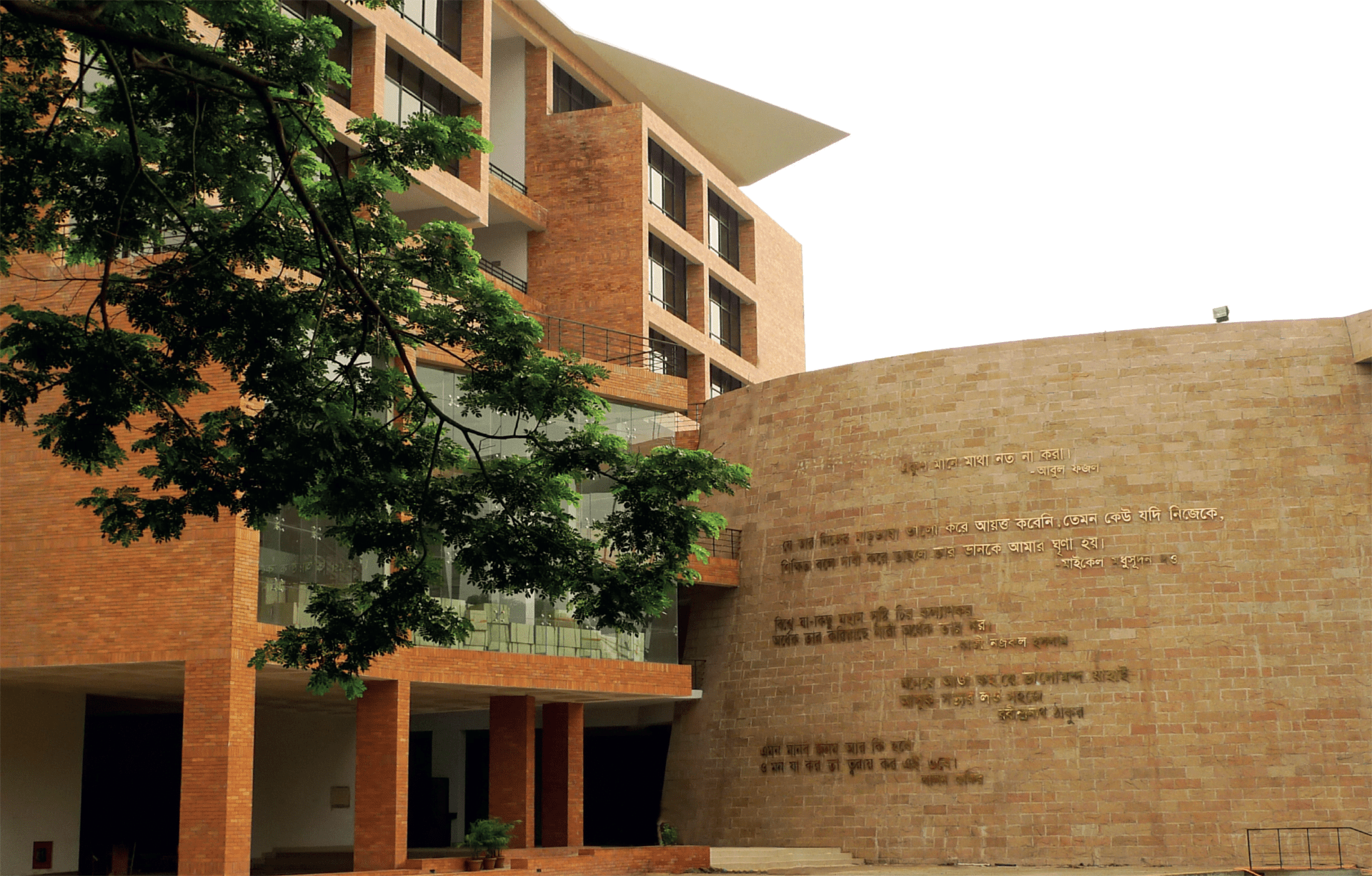
Silence, an Integral Aspect of ARCHITECTURE
As Nurur Rahman Khan commenced his discussion on architecture, a concept exists only as an idea that becomes apparent once it is created. Attaining the deep level of architecture requires a great deal of time, attention, and meditation. If we wish to reach that level of it, we must bring our soul to it. It could be difficult for the public to comprehend or accept it entirely. Nurur Rahman Khan began his architectural career at Bangladesh University of Engineering and Technology (BUET), despite lack of understanding of how architecture functions. The sole realisation he possessed was that architecture constitutes a fusion of engineering and creativity. In his formative years, he delved deeply into music, photography, graphic design, acting and writing alike. Before he began his career in architecture, he had no prior experiences in drawing or sketching. Over the time, he acquired the skill of drawing architecture from mathematical drawings in the form of ‘axonometric’ drawings. He did not become aware of architecture until the very end of his first academic year, since it was then that he was able to appreciate architecture’s beauty. As a consequence of his subpar craftsmanship, he used to receive lower grades. After his first year of school, he began going to the library to learn about the aesthetics of architecture. It was at that point during which he began comprehending the aesthetics of architecture, and since then he never stopped his journey to acquire knowledge about it thereafter. He continued by outlining the method by which architects prioritise aesthetics over attaining the fundamental purpose of their design, instead of flaunting the design, one should be proud of it. The greatest architect of Bangladesh, according to him, is Muzharul Islam, and his level of prosperity ends there. We are forfeiting numerous facets, failing to appreciate the true essence of architecture. Our focus has shifted towards the grandiose, the towering, and the extravagant, relinquishing our humanity to the allure of grandeur and brand-centric values. Addressing the architects within our community, NR Khan inquired about the apparent challenge in reaching the remarkable levels of creativity and imagination set by Muzharul Islam in the field of architecture. Tanya Karim and Nurur Rahman Khan, who are partners, founded an architectural firm with the goal of significantly altering the architectural arena. Their office became known for its theoretical pretext, search for situated modernity, and use of historical and cultural allusions. In the summer of 1991, Tanya Karim, NR Khan & Associates became known as an architectural firm leading the way in modern ideas in Bangladeshi architecture. Throughout his academic journey, he teamed up with Tanya Karim as a groupmate, and their collaborative synergy flourished after they graduated between the years 1992 to 1993. In his viewpoint, when discussing Tanya Karim, he recognised her as a nurturing figure who would impart knowledge to classmates just before exams. He highlighted the enduring complementarity between himself and Tanya Karim. During their studies with her, a profound mental connection was forged. Tanya Karim played a pivotal role in enlightening him about the intricacies of art, fashion, and other facets of design, drawing from her upbringing in a culturally enriched family. Their designs are always inextricably linked to the point at which the architecture’s user finds it worthwhile. “A project is a canvas of someone else and we are the architects painting on it. If we indulged ourselves in a self-centered design, it definitely would have been a short lifespan,” Nurur Rahman Khan remarked. They (TKNRK) have secured positions of distinction in numerous competitions, notably triumphing in the National Competition organised by the Institute of Architects Bangladesh (IAB) in 2012. They clinched the 1st prize for their outstanding design of the Bangla Academy. The Bangla Academy project takes a multifaceted approach to sustainability rather than focusing only on being “environment friendly”. The “site” is the first sustainability metric that the project looks at. On the grounds of a historic building and later additions to the “Bangla Academy Complex’’. In the modern era, there appears to be a tendency to use sophisticated design techniques and technologies to achieve a “green” solution to building design. It is important to remember that utilising the actual “environment” is one of the most logical approaches to designing “environment friendly” architecture. The site, the environment, and the climate should take center stage. “Indifferent” methods can be used to create a successful “green” architectural design. As for the building design, a significant portion of the office building has been designed to benefit from natural ventilation and abundant natural lights. Most days, the interior is bathed in natural light, creating a well-lit and airy environment. Moreover, when discussing TKNRK, he emphasised, “We are forward-thinking individuals, acutely aware of the essence of our architectural pursuits. Our ancestors crafted cities like Mahasthangarh 2000 years ago without external guidance as today’s. Therefore, as architects today, why limit ourselves to the mundane concept of a ‘Kurey Ghar’ (hut) that does not align with our cultural heritage? Instead, let’s draw inspiration from the grandeur of the cities our forebears-built millennia ago and aspire to create something extraordinary. By utilising costly materials to create an appearance of frugality, we are engaging in economic dishonestly within the country. This practice not only deceives the economy but also reflects a lack of integrity towards the materials themselves.” For him, it holds paramount importance to instill into people a genuine understanding of the true essence and user-centricity of architecture, steering clear of the reliance on extravagant products merely for aesthetic appeal. Whether designing a school or any other space, the emphasis lies in ensuring that the design not only looks the part but also functions seamlessly according to its intended purpose. In his elucidation about TKNRK, he expressed that, they do not adhere blindly to any distinct style, recognising that they are in a constant state of learning and evolution. The absence of a signature style, in itself, constitutes their unique design approach. Emphasising the diversity of our nation’s inherent genetic
Read More


